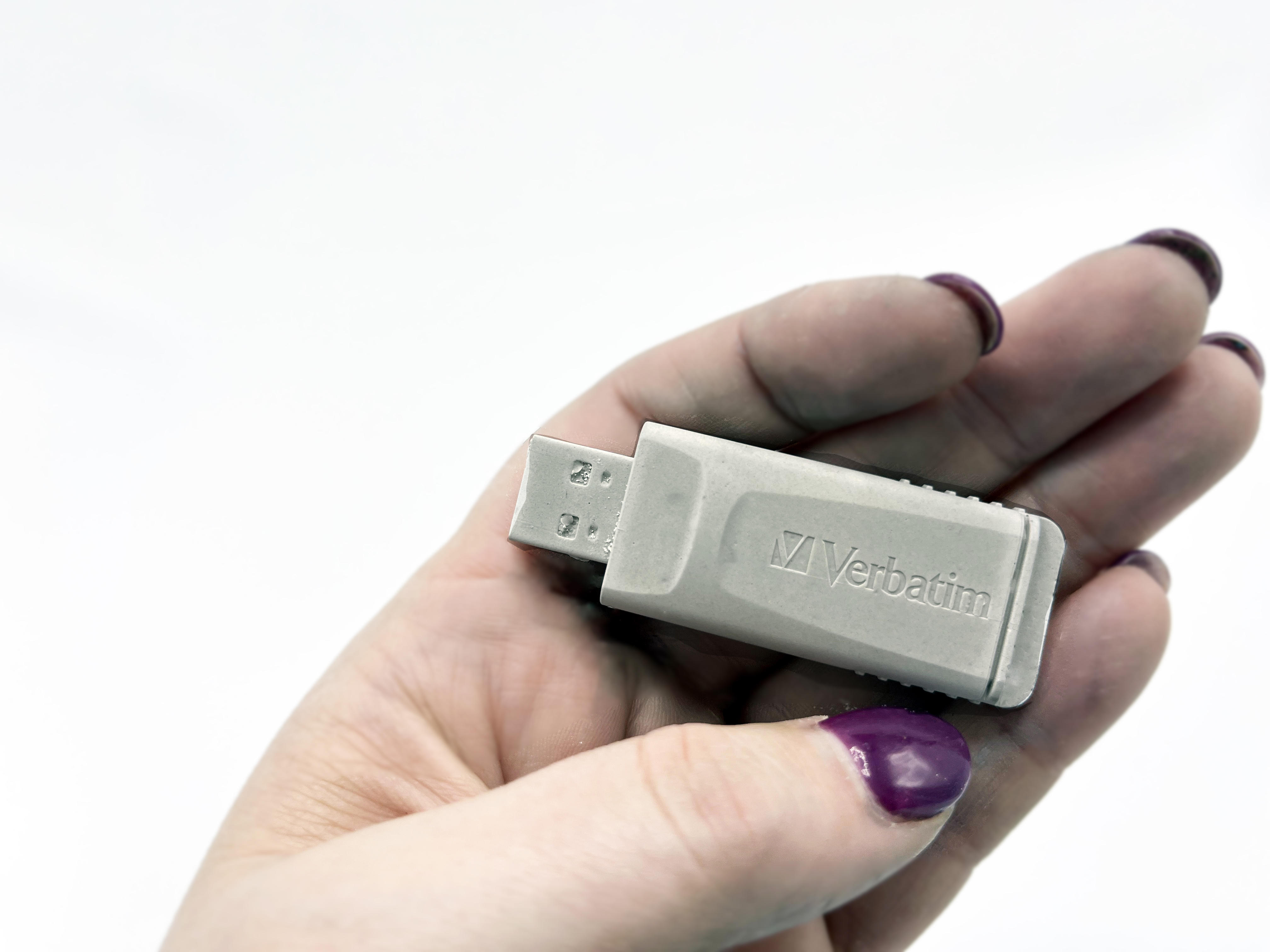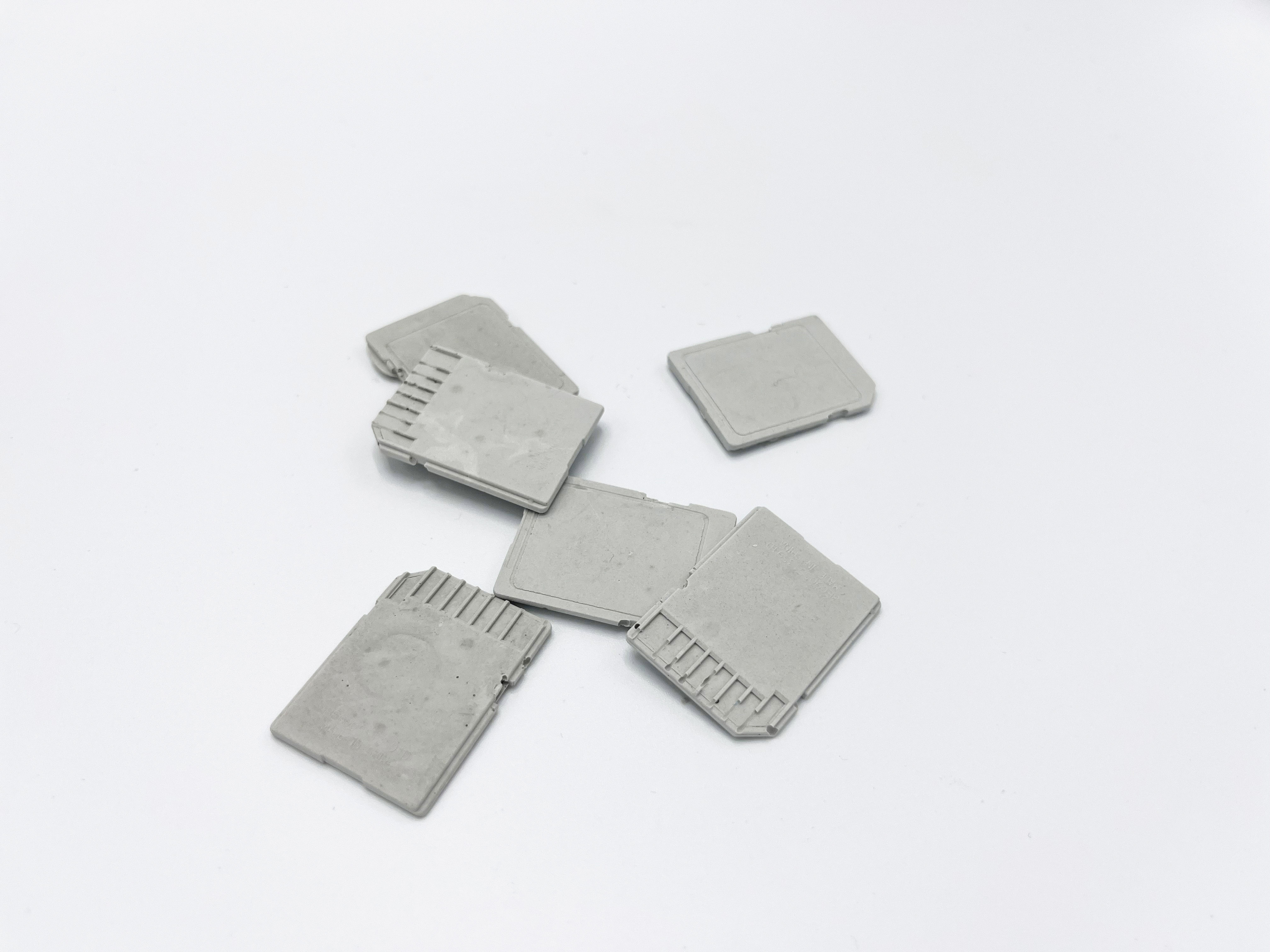Verbatim: Archives, Access, and Other Myths
Candadian Center for Research Fellowship
The Digital Now: Architecture and Intersectionality
Candadian Center for Research Fellowship
The Digital Now: Architecture and Intersectionality

The title of this work comes from recent concrete casting work of data input and storage objects. Image 1 is of a USB (Universal Serial Bus) drive made by the company Verbatim - which promises that data is copied, translated, and stored as an exact replica of the original material. Each hardware element was molded in silicone to create a form and then cast as a solid in Rockite – creating a copy but an inoperable one – an illusion of usefulness and accessibility. I began this work as an archival project to develop an intersectional method for navigating the The Archaeology of the Digital archive. I hypothesized that within the archive were untold stories and hidden figures that countered the narrative that women and people of color were not present at the advent of the digital in architecture. What I found instead was the absence of these records.
(Full text will be available in a forthcoming book.)



